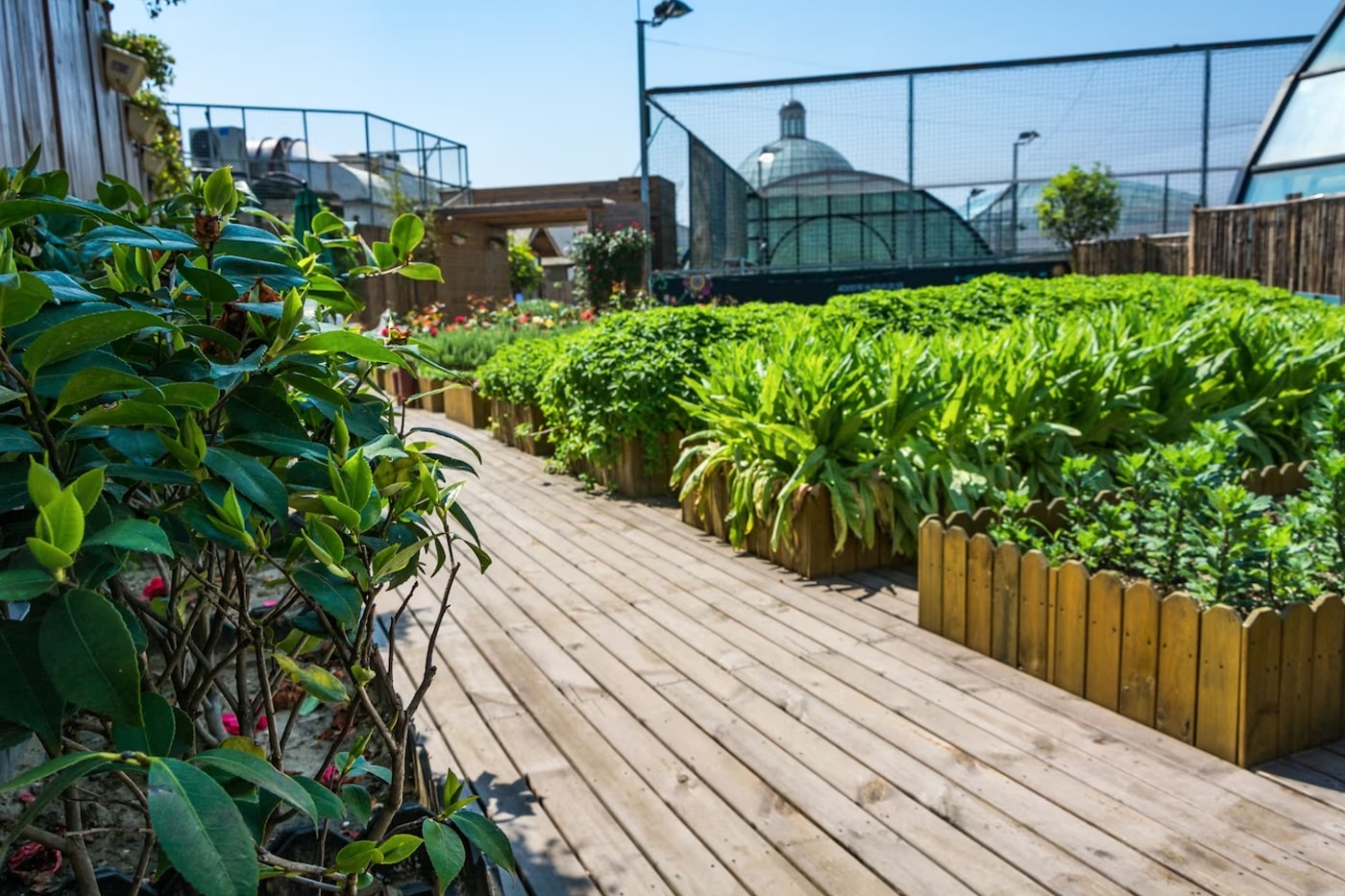So, you want to start a garden in your urban space. Congratulations! There are so many benefits to having a green urban oasis, like boosting your mood, providing you with locally sourced fruits and veggies, and even reducing air pollution.
But when it comes to managing an urban garden space, sustainability is key. After all, if we can't sustain our gardens, then how can we expect them to last? Luckily for us, there are some tips and tricks that can help us succeed in growing sustainable urban gardens.
Let's dive right into 8 useful tips to manage a sustainable urban garden so you can reap the rewards without doing damage to the planet.
Contents []
1. Use Compost and Mulch

Using compost and mulch will not only aid in retaining moisture but also supply plants with all nutrients they need. Compost is made up of organic matter including leaves, grass clippings, and food waste. On the other hand, mulch is composed of grass clipping, shredded bark, and other organic materials that are used to cover the soil and provide a protective layer for plants.
Benefits of mulch and compost include:
- Provide essential nutrients.
- Retain water.
- Prevent erosion.
- Improve aeration.
2. Harvest Rainwater and Recycle Waste Water
Are you looking for means of minimizing water costs and conserving resources? Well, one of the best things you can do is harvest rainwater and recycle wastewater. By doing this, you are able to save money on water bills.

If you are looking for ways of recycling water to make it safe for drinking, Big Berkey is here to help you in the process. The reason they chose this firm is that their water filter systems remove chlorine, heavy metals, radiological, and fluoride just to name but a few.
3. Choose the Right Container
One of the critical steps is choosing the right container for your plants. It’s important to choose a container that is well-insulated and made with a durable material like ceramic. This helps and prevents the soil from drying quickly and thus retains moisture better.
Furthermore, ensure that the containers have proper drainage holes so that excess water can filter out.
4. Create an Irrigation System

Is it your dream to have a functional sustainable garden even if there is a water shortage? If yes, you can start by creating an irrigation scheme. The benefits that come with irrigation include conserving water, saving time, and energy, and most importantly – it’s cost-effective.
Some of the irrigation systems you can consider to sustain your garden include:
- Sprinklers.
- Soaker hoses.
- Drip/overhead.
- Hand watering.
5. Choose Appropriate Plants
There’s no better way of having a sustainable garden than having the right choice of plants. Having trouble choosing the right plants? Here are a few tips to consider when choosing plants. Check out!
- Know your climate. Every place has different climatic conditions. And as such, it’s important to examine the kinds of plants that can do well in a given set of conditions. Get to know the humidity, wind velocity, temperatures, and whether your location is prone to heavy rains or cold winters.
- Research plant types. Understanding your climate is a way of determining the plant types that will thrive in it. Mostly, native plants are the most preferred due to their ability to adapt to the local environment over time.
- Consider maintenance costs. Different plants happen to have varying maintenance needs. Some need a lot of fertilizers to grow, some need a place with a lot of water for them to grow while others need regular trimming.
6. Maximize Sunlight

Are you aware that the sun is essential for a healthy urban garden? In fact, sunlight is one of the fundamental factors and necessities for the process of photosynthesis to take place. Ensure that your plants receive adequate sunlight.
7. Utilize Vertical Space
If you want to eke out every bit of available growing space, then you need to utilize vertical space in your garden. That way, you can stretch the area you can work with even more. Vertical gardening is especially useful in urban settings as well since land is usually at a premium.
8. Design a Balanced Garden
Determining how to design your garden is just as important as selecting the right plants. For a sustainable urban garden, it’s all about designing a balanced and functional ecosystem. Having multiple layers of plants, from ground-hugging plants to tall trees, helps create a home for different creatures from lizards to birds. The key is to find a mix of plants that will suit your local environment and provide resources for the wildlife around you.
Final Remarks
Building and maintaining a sustainable urban garden is a great way to enjoy the outdoors and reduce your carbon footprint. By following the tips mentioned above, you will be able to get to grips with urban gardening and reap the rewards of your efforts. Not only will your garden look beautiful, but it can also provide you with fresh and nutritious food while helping to reduce your environmental impact.
You can as well recycle water using a water filtration system to help in recycling water for reuse (of course for irrigating the plants).



